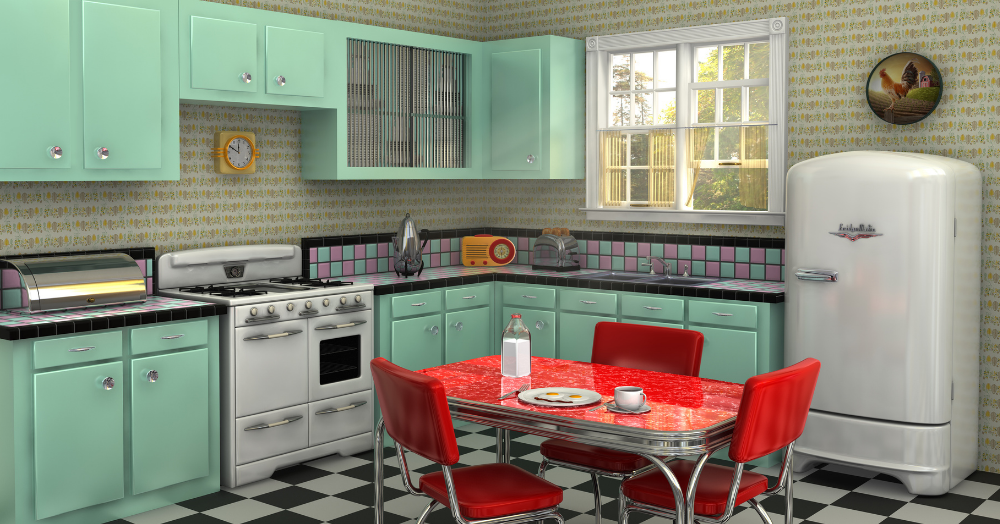Simple design defines both architecture and furniture from the 20th Century. Properties from this time period were different to those that came before and shaped the way that we live today.
The mid-century period refers to the years between 1933 and 1957. However, many discount those earlier years due to WW2 and define the Mid-century time from 1945-1957.
The horrors of war brought about a fundamental change in the way we lived. The early 20th Century was different, and gender-specific roles were the norm.
Homemaking was women's primary role, whilst men worked to earn money for the family. Women had only had the right to vote for a few years at this point and were not able to hold a bank account or own a property.
But the war changed this.
Women were left at home and suddenly had to survive, earn an income, look after the families and raise the children alone whilst the men were away fighting.
This resulted in many women relying on each other, helping out, and bringing communities together. And of course, for those soldiers that did come home, there was an undeniable camaraderie from their time serving.
And after the war ended, there was a building boom. Properties and infrastructure had to be built quickly and cheaply.
Therefore, properties from this period used simple, affordable, and easy to get hold of materials - mainly the humble brick.
Many of the elaborate decorations from Georgian and Victorian properties were dismissed to allow the building to happen faster. I suppose after so many years of austerity during the war effort, ornate cornice doesn't seem so important anymore!
This was also an opportunity to alter how we lived in our homes. And so, the new properties were built with the community in mind.
Properties were laid out in squares with lots of open green space in the centre for children and families to enjoy time outside. All homes were also given gardens to allow people to grow their own veg and spend more time outdoors in the fresh air.
This new simple design defines both architecture and furniture from the 20th Century.
Gone were the detailed plaster cornice of the Georgians and Victorians. Properties followed the clean, simple lines of the Art Deco style, and they could be designed and built quickly and much more cheaply.
New techniques were also used to allow each room in the home to be larger. Post-war homes began to embrace open-plan living with large rooms that are connected (think of those serving hatches to pass food through from the kitchen to the dining room.)
Windows were much bigger to allow natural light in, so properties started to have one large window instead of the multiple windows in each room. If you've ever lived in a property from this period, you'll know how tricky it can be to find curtain poles and curtains to fit!
It became more commonplace for women to work after the war, whether in factories or shops and farms. So, there was more income in the average household but less time.
This was when Hire Purchase became more accessible for 'normal' families. These newly cash-rich but time-poor families could purchase washing machines and fridges to make their domestic lives a little more efficient. Factories were able to turn out appliances quickly using the relatively new assembly lines methods. But, crucially, kitchens were too small to house these new appliances.
So, the new properties were designed with bigger kitchens to allow for this new lifestyle.
Mid-century property styles have shaped how many modern homes are designed now. Due to the simple design, properties became cheaper and significantly easier to build.
Modern-day home builders have kept this simple design principle to keep their costs down (and profit margins high!)
Although thankfully, you don't see a serving hatch in floorplans very often anymore!
If you live in a property from this time, let us know!
For more updates and new properties follow us on Facebook, Instagram and YouTube

